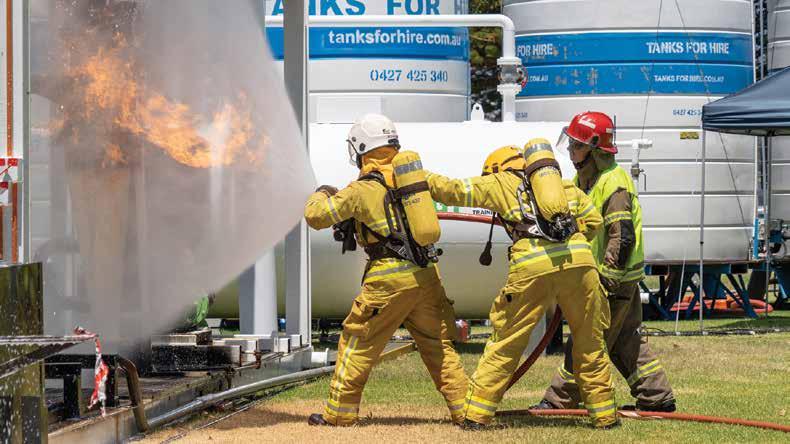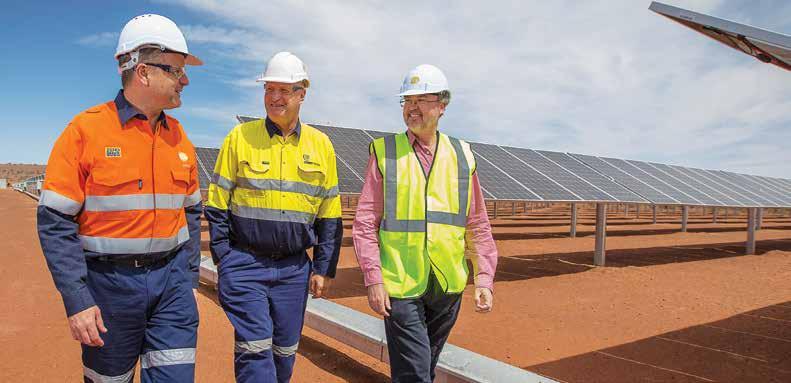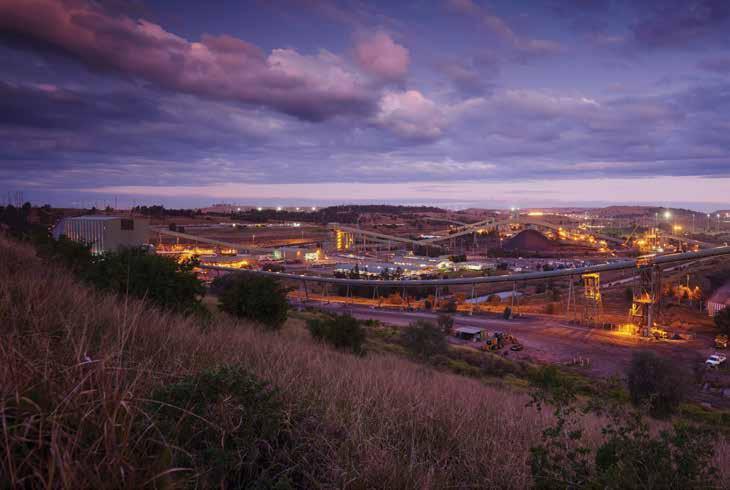
3 minute read
Time to reset
Safety reset spurs return to top priority
NEARLY 50,000 WORKERS HAVE BEEN THROUGH QUEENSLAND’S SAFETY RESET FOLLOWING A STRING OF TRAGIC MINE AND QUARRY INCIDENTS IN THE STATE. SAFE TO WORK WRITES.
Queensland’s first ever safety reset has reached more than 98 per cent of the state’s mine and quarry workers.
State Minister for Natural Resources, Mines and Energy Anthony Lynham launched the reset last July in response to six fatalities in Queensland over a 12-month period.
This decision was widely backed by mining and services companies, which immediately worked with government and industry bodies to implement the plan.
Anglo American, one of Queensland’s leading employers, has unsurprisingly taken the reset seriously, given the company’s extensive involvement and government
discussions around safety in the state.
The size of Anglo American’s workforce and operations clearly doesn’t deter the met coal giant. Its entire 5400-strong workforce has taken part in the reset by completing over 50 sessions across its sites.
“Despite significant improvements, we still have not been able to eliminate fatalities from our industry,” Anglo American metallurgical coal business chief executive Tyler Mitchelson tells Safe to Work.
“This is something we are focussed on every hour of every day, and at every level of our business.”
With Anglo American senior leadership teams leading the sessions at its mine sites, the company’s safety reset focussed on an end of Break out session at the Grosvenor mine during safety reset.
fatalities (EOF) framework.
This is Anglo American’s groundwork for addressing critical safety risks, underpinned by best practice knowledge and safety innovations.
Anglo American’s understanding of best practice mining safety reflects its decision to sponsor the 2019 Queensland Mining Industry Health and Safety Conference.
The conference attracted around 1000 industry members from across government, unions, mining and quarry companies and suppliers to discuss best practice safety. “Our safety resets were comprehensive, and addressed safety at an industry, company and site level,” Mitchelson says.
“The sessions were a good
opportunity to hear from our workforce and be able to talk openly with our workforce, so we can work together to improve the safety across our business and the broader industry.”
Anglo American’s reset sessions have been tailored to its open cut and underground operations, and to each specific site.
The company also champions a ‘caring culture’ among its workforce to motivate their behavioural change and prioritise safety.
Mitchelson believes the collective effort of the industry to have these conversations across every mine site in Queensland is positive for the sector, a sentiment echoed at New Century Resources’ Century zinc mine.
New Century’s safety reset has sparked a different conversation, with the company focussing on areas that participants identify as higher risk elements of their work environment.
While some of these risks are common to mining, such as isolation, vehicle interactions and working at heights, others are unique to the modern Century operations.
“The Century mine is the largest hydraulic mining operation in Australia’s history, so we have identified unique risks and mechanisms to ensure the safety of all personnel in their work,” New Century head of corporate affairs and social responsibility Shane Goodwin says. Team members from Anglo American’s Moranbah North mine with CFMEU’s Jason Hill.

“(New Century’s) site specific safety and training initiatives … focus on risk identification and mitigation.”
Thanks to positive discussions about site risks and their appropriate control mechanisms, the reset improves the safety awareness and practices of the Century workforce onsite, according to Goodwin.
It covered 266 personnel over a two-week period and delivered positive change across the site.
“We were very pleased to see the entire workforce at Centu ry taking the reset discussions so seriously,” Goodwin says.

New Century continues to adopt this approach to safety discussions in its ongoing workforce planning meetings, outside the reset.
Goodwin says this gives employees the opportunity to identify innovative solutions that could improve risk management onsite.
The safety reset has attracted high praise from across Queensland’s resources industry, with positive feedback about its effectiveness and how it was executed.
“The two-way conversations between workers and safety representatives not only educated workers about the potential dangers on mine sites, but alleviate any inhibitions they may hold about reporting safety concerns to senior management,” QRC chief executive officer Ian Macfarlane says.
Macfarlane hopes the tragic loss of life of the miners will strengthen the sector’s commitment and collective resolve towards safety standards.
“Everyone who works in a mine, or any other workplace for that matter, is entitled to leave for work and return home safely to their loved ones,” Macfarlane concludes.







